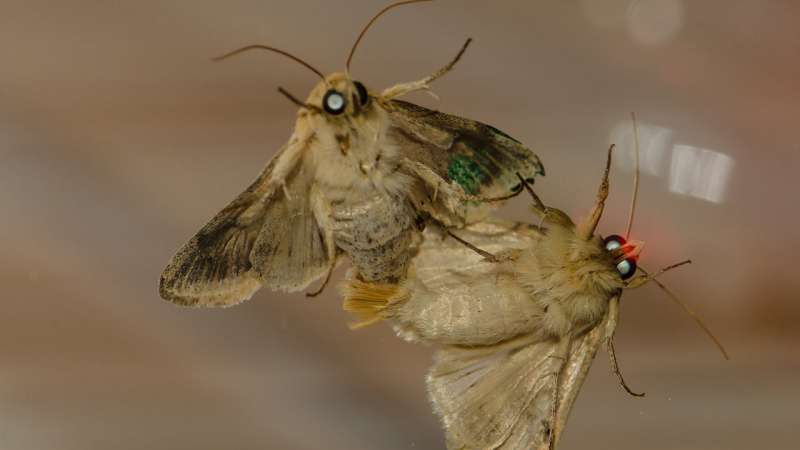Moth females use scent proximity to attract mates

Female moths deemed unworthy or unattractive to male moths can increase their odds of attracting a mate by emitting their sex pheromones - their "come-hither" scents - in close proximity to attractive females, according to new research from North Carolina State University. The findings shed light on so-called satellite strategies used by animals to better their chances at finding mates.
The research also showed that moths with attractive pheromones also benefitted when they were in close proximity to unattractive females, as discerning males chose them more frequently than if they were paired with another attractive female.
NC State entomologist Coby Schal and NC State and University of Amsterdam colleagues wanted to learn more about the sexual signaling efforts used by moths, a diverse group of insects with well-identified sex pheromones.
Using both lab wind-tunnel tests and tests on a research farm in Clayton, N.C., the researchers showed that unattractive females - those with a less attractive blend of sex pheromones - had little to no chance of finding a mate when on their own. But when in close proximity to an attractive female, the unattractive females were able to attract a male about 17 percent of the time.
"We suspect this has to do with the fact that males make 'mistakes' as they navigate closer to their target - the attractive female," Schal said.
At the same time, attractive females benefitted from proximity to unattractive females. They mated sooner than attractive females that were searching for males alone or with other attractive females.
Schal says the findings broke some new ground in describing previously unseen satellite strategies in animal reproduction.
"These satellite strategies are always described in the scientific literature as male strategies, but here they're being used by female moths," Schal said. "Also, auditory and visual satellite strategies have been described, but our work here shows new findings with an olfactory strategy."
The research appears in Scientific Reports. Michiel Van Wijk, a post-doctoral researcher in Schal's lab who is now at the University of Amsterdam, is the corresponding author on the paper. Schal, NC State post-doctoral researcher Jeremy Heath, Rik Lievers, a Ph.D. student at the University of Amsterdam and Astrid Groot, an associate professor at the University of Amsterdam, are paper co-authors.
Funding for the work came from the National Science Foundation (awards IOS-1052238 and IOS-1456973) and NC State's Blanton J. Whitmire endowment. The W.M. Keck Center for Behavioral Biology, the Netherlands Organization for Scientific Research and the Max Planck Society also supported the research.
More information: Michiel van Wijk et al, Proximity of signallers can maintain sexual signal variation under stabilizing selection, Scientific Reports (2017). DOI: 10.1038/s41598-017-17327-9
Journal information: Scientific Reports
Provided by North Carolina State University



















